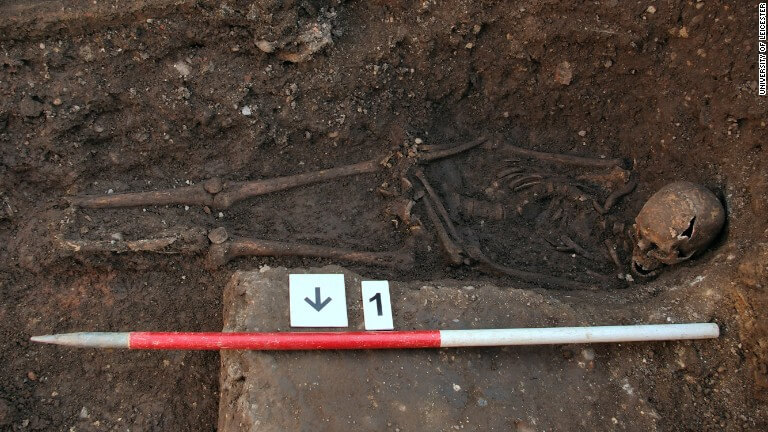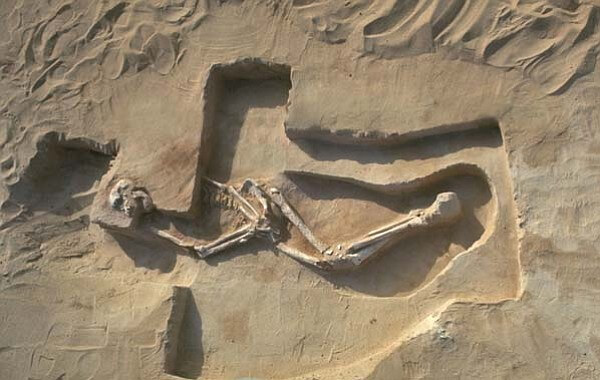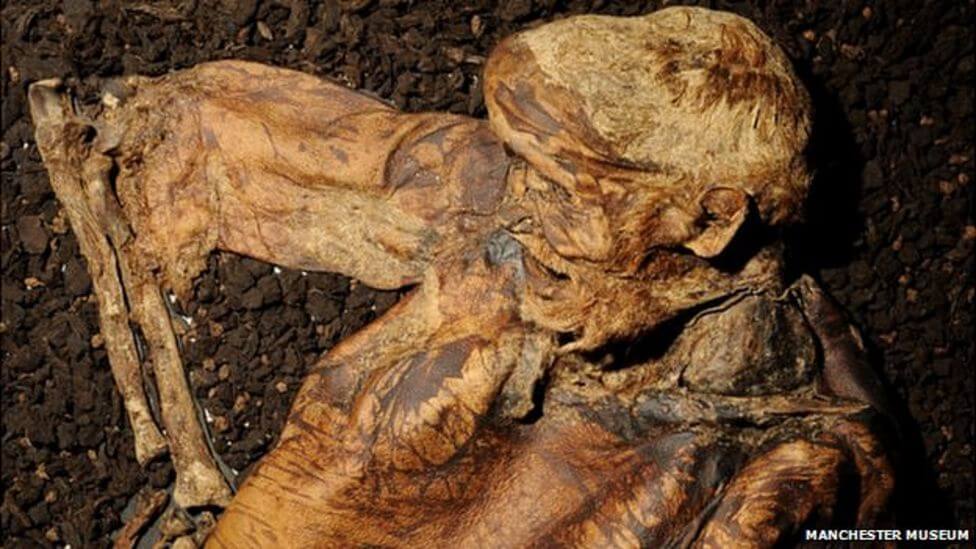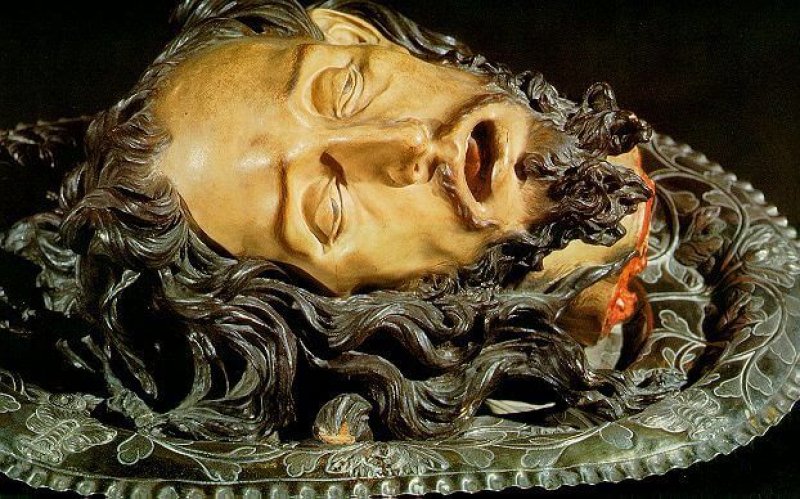There’s a ghastly severed head in St Robert’s Roman Catholic church, just down the road from me in Catforth, northern England. Having read a brief guide to this church that mentioned a holy relic, the skull of a martyr, I decided to go and see it for myself.

Only in real life (or rather death) it’s not a skull — it’s a gruesome human head, complete with protruding vertebrae, withered skin and mouth gaping wide in a frozen scream. Parish tradition says it’s the head of a local priest, Philip Holden, murdered in the middle of mass by Protestant troops after a battle in the English Civil War.
With Catholic icons banned, the priest’s family had preserved the grim and illicit relic, secretly passing it from father to eldest son across the centuries, until finally bequeathing it to the church in the early 1900s. Or so the legend goes.
However, a forensic examination in the 1960s suggested a different story and indeed a victim. The examiner determined the head had been ‘hanged, drawn and quartered’, a cruel punishment, reserved for traitors (and unrepentant Catholics). Apparently, the victim had been dragged or drawn to the gallows, hanged almost to the point of death, disemboweled, beheaded, and finally quartered into bloody pieces. Circumstantial evidence suggest that the skull was likely that of a Catholic priest from nearby Wigan, who’d been captured and executed in 1590, Miles Gerrard.
Still, most local parishoners cling to the original story. 21st century genetic science is far more sophisticated than forensic evidence and could clear up this mystery quite quickly. For example, modern genetics-based forensics resolved the mystery of a medieval skeleton discovered under a car park in the city of Leicester in 2012. Suspecting it was the remains of Richard III — supposedly killed during the Battle of Bosworth in 1485 — DNA from the bones were matched to Richard’s descendants, confirming it was indeed the infamous king, long regarded as a villain of English history.

Although the villagers in Catforth may not be so keen on relinquishing their myth, something similar likely could be done with the St Roberts’ head. Experts could use DNA from Holden’s and Gerrard’s surviving kin to show whose family the relic really belongs to. Indeed, there’s already been a precedent at that very church; when stained glass windows depicting local martyrs were installed in the 1920s, their faces were modeled on those of their still living relatives.
Science and spirituality
Yet, while genetic science could perhaps answer whose skull it actually is, it also raises some ethical issues. Just because we can satisfy our slightly morbid curiosity, does it therefore mean we should? Where do we draw lines in recreating the past driven by little more than curiosity?
While hard-nosed materialists might scoff at the idea that it’s somehow sacrilegious to interfere with such remains, we should at least pause to consider the wider context of any such a claim.
In the past, researchers riding roughshod over local knowledge and customs — or doing far, far worse, such as literally stealing the severed heads of African tribesman killed in battles to ‘advance medical research’ —has created much understandable suspicion of science and scientists in many parts of the world. It’s also led to several high-profile stand-offs between (for want of a better phrase) science and spirituality —between those (who claim to be) advancing human knowledge and those (who see themselves as) protecting the sacred beliefs of historically disregarded peoples.
Take, for instance, the decades-long controversies over who has the ‘rights’ to ancient human remains, such as Kennewick Man in North America or Mungo Man in Australia. Who ‘owns’ the history of these bones that were once living human beings? Scientists? The indigenous nation? Or these individual’s actual living descendants?

Not only is there disagreement among these groups but also within the groups themselves. In recent disputes about ancient human remains, some indigenous people oppose scientific research, while others welcome it. Similarly, while some scholars decry the “chilling effect” of existing reburial legislation, others dismiss this as “reactionary” and “alarmist…racist garbage”.
Compare this situation to human remains that have lost strong genealogical and/or spiritual connections to existing cultures, such as the famous ‘bog bodies’ of Europe (human cadavers naturally preserved in peat bogs). Since their discovery, the likes of Tollund Man and Haraldskjaer Woman in Denmark, Old Croghan Man in Ireland, and Germany’s Windeby Girl (actually a boy) have been prodded, poked, and put on public display, along with all the intimate details that scientific analysis has revealed about their lives.
Is such treatment of once-living humans evidence of our descent into soulless materialism? Or of a loss of deeper respect for human life (and death)? Does it illustrate a deep divide between those cultures that have largely abandoned spiritual beliefs, which has produced most of the world’s scientists, and those that haven’t?
I would argue ‘no’, that there is a uniting spirit that links all of us to our past. Why else does the discovery of bog people create such interest and why else are their museum displays so enduringly popular? In modern secular societies, it seems, the passionate interest in what makes us human (and about our past) is now better catered to by science rather than religion.
Science, mystery and truth
To its detractors, science is often seen as cold, clinical and sterile, robbing the world of wonder and mystery. That’s too cynical. You can have both an emotional reverence for the past (or for nature or for the cosmos) and a rational respect for science; reverence and reason can both fuel and foster each other.
What many people don’t realize (and many scientists forget) is that science itself is driven by human emotion; and, dare I use the term, spirituality. As Scottish Enlightenment philosopher David Hume once remarked, “reason is the slave of passion” — that is, it’s our pre-existing desires that motivates our actions rather than simply reason alone. Scratch any budding scientist (especially a biologist) and you’ll find an underlying fascination with the natural world and how it works.
Indeed, similar passions motivate both science and religion: a deep desire to understand why the world is as it is. It’s inherent in human nature.
Yet there are darker facets to our nature that, especially in science-dependent advanced technological societies, we tend to overlook. Again, wider consideration of our relationship to human remains can bring this into focus.
We carry with us our primal tribal nature, and that’s good
Just a few dozen miles from St Robert’s Church, the best preserved bog body in Great Britain was unearthed in the early 1980s. The manner in which this 2000-year-old Lindow Man was killed — “by blows to the head, garrotting, swallowing mistletoe and then drowning in the waters of the peat bog” —suggests he was ritualistically sacrificed, to gods and for beliefs unknown. A millenium and a half later, for a different God and for different beliefs, Miles Gerrard (and all the other martyrs, both Catholic and Protestant) was likely, similarly, ritualistically killed.

The human emotions that motivated such actions did not just magically disappear. Anti-Catholic laws persisted in Britain until the 1820s (and anti-Semitic ones for decades longer). Overt Protestant/Catholic animosity lingered in northern England until well into 20th century (when new waves of immigrants, with different customs and beliefs, brought about new sources of ethnic tension). Sectarian divisions in nearby Northern Ireland and Scotland, meanwhile, endure to the present day.
But the point is that our primal ‘tribal’ nature, our deep loyalties for those with shared beliefs, still lurk beneath the veneer of rational modern life; for evidence, you need look no further than the political polarization in Britain over Brexit, or between Republicans and Democrats in the US, or the year of riots and civil disturbances that culminated in the storming of the US Capitol on January 6. All this in societies that regard themselves as somehow ‘advanced’.
As EO Wilson, the towering figure of modern biology, aptly remarked, “We have created a Star Wars civilization, with Stone Age emotions, medieval institutions, and godlike technology.” Yet, while our knowledge and capabilities have changed, we still share the same human passions as Lindow Man from two millennia ago, with 9000-year-old Kennewick Man and with Mungo Man from 40,000 years or more back in our species’ past.
This has been a journey of a discussion of a near-forgotten relic in an obscure parish church in rural Lancashire, England. It’s clarified my perspective; it wouldn’t be wrong to use DNA to find out who the severed head really belongs to. The stories and legends behind that skull will live on, irrespective of whether it’s Robert Holden’s or Miles Gerrard’s or someone else’s entirely. We can create new knowledge while still preserving the past, a sentiment that also applies to other ancient human remains. Thought and respect go a long way.
But here’s a final, less reverent thought. There’s perhaps a dozen or more churches in Europe that claim Jesus’s foreskin as a sacred treasure. Surely, these are relics worthy of modern genetic research.
Thanks to parishioner and amateur historian Mike Hartley.
Patrick Whittle has a PhD in philosophy and is a New Zealand-based freelance writer with a particular interest in the social and political implications of biological science. You can find him at his website patrickmichaelwhittle.com or follow him on Twitter @WhittlePM
This article previously ran on the GLP on April 13, 2021.































